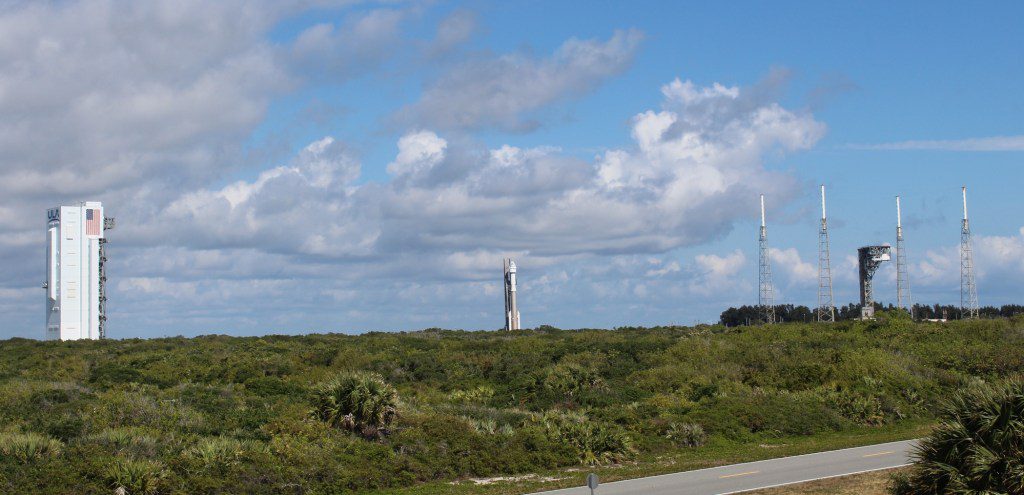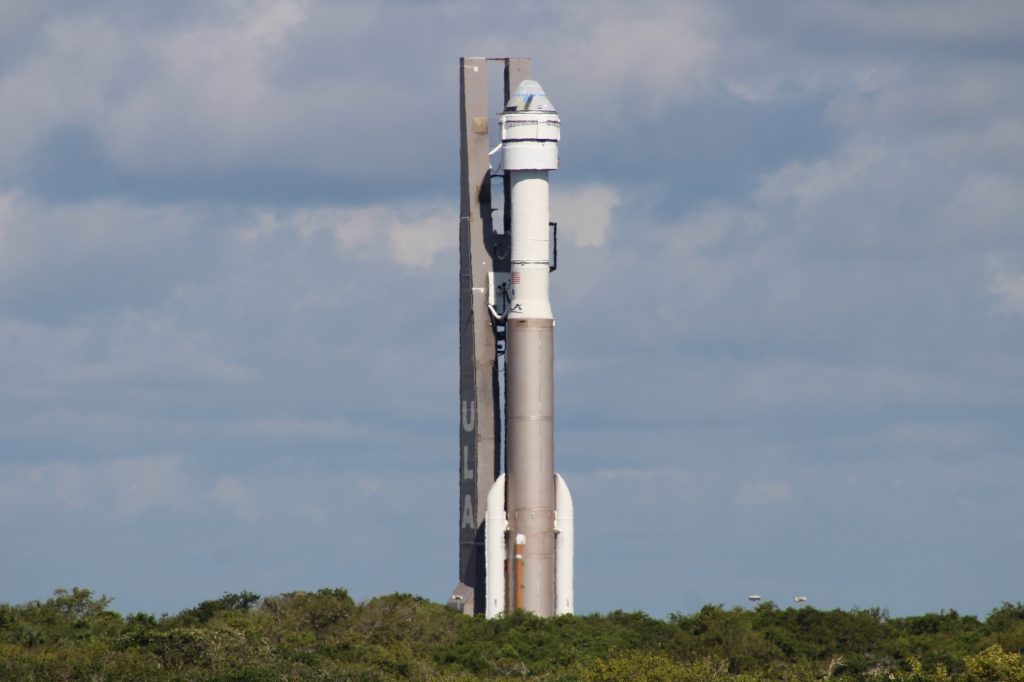The upcoming launch of Boeing’s CST-100 Starliner will be the first time the spacecraft has transported astronauts and also the initial crewed launch of the Atlas 5, which is nearing retirement.
The Crew Flight Test (CFT) mission is still scheduled for launch at 10:34 p.m. Eastern on May 6. The Atlas 5 rocket carrying the Starliner spacecraft was moved to the pad on May 4, with no reported technical problems and favorable weather on the forecast.
The CFT mission is the 100th flight of the Atlas 5.th The Atlas 5, which first flew in 2002, has completed 100 flights. However, this mission is the first time the rocket has carried astronauts.
To support crewed flights, United Launch Alliance has made some adjustments to the rocket. These include adding an emergency detection system that monitors the launch vehicle’s systems and provides that information to Starliner so it can activate its abort system in case of a rocket malfunction. This version of the Atlas 5 also uses a Centaur upper stage with two RL10 engines, which is not typical for other missions but is similar to previous versions of Centaur used on other launch vehicles and ULA’s new Vulcan rocket.
There are a few other changes to the rocket compared to those used for satellite launches. Gary Wentz, vice president of government and commercial programs at ULA, mentioned, “The vehicle is essentially a standard Atlas 5 vehicle. It goes through the same typical procedures and processes.” This was said at a briefing on May 3.
Certifying the Atlas 5 to carry NASA astronauts required extensive work, including between 11,000 and 12,000 individual verifications of vehicle components and processes, according to Ian Kappes, from NASA’s Commercial Crew program.
This involved reviewing documents from decades ago during the rocket’s development. Kappes mentioned, “We really had to work with our ULA partners to go find paperwork from 20 years ago, to really look at the data on Atlas 5 and Centaur.” This included one document containing hand calculations.
One particular challenge for that assessment was obtaining data for the Russian-built RD-180s engines that power the Atlas booster. Kappes said, “The biggest risk that we had to accept is that there’s only a certain amount of insight that you’re going to get.”

Kappes mentioned that there isn’t a specific risk metric that Atlas 5 had to meet for a crewed flight, and it's a case-by-case approach, balancing safety with recognizing that not all risks can be eliminated. “It’s a case-by-case basis,” he said working with ULA to assess specific risks. “What can we do to bring this down?”
“We’re trying to be as safe as we can be,” he added, “but I also can’t crush our commercial partner. I can’t say I need to you need to make this thing 100% safe because then it’s not economical for them.”
After Commercial Flights Test, Boeing secured a deal with NASA for six functional Starliner trips, each launching on Atlas 5. United Launch Alliance (ULA) is no longer offering the Atlas 5 as they transition to the Vulcan Centaur. This means any extra Starliner missions, for NASA or others, would need to switch to another rocket like Vulcan.
“We’re still conducting various research” about certifying Vulcan for human use, according to ULA’s Wentz. He mentioned that much of the equipment between Atlas and Vulcan is similar, with the biggest change being the switch from kerosene-fueled RD-180 engines to methane-fueled BE-4 engines.
Mark Nappi, vice president and program manager of Boeing’s commercial crew program, mentioned at the briefing that his company had been collaborating with ULA on certifying Vulcan for Starliner. “That’s what we’ve been focusing on for the last year and a half or so, just understanding what it will require,” he said. “We now have a pretty good understanding of that.”
Kappes stated that his office is beginning to consider what would be necessary to approve not only Vulcan but also other vehicles, such as Blue Origin’s New Glenn, for manned launches. “We are definitely planning for the future,” he said, learning from experiences with both Atlas 5 and Falcon 9. “My team would appreciate obtaining additional data from other vehicles.”









